WWII Revolutionized Women’s Fashion — 20 Photos Proving 1940s Style Is Truly Timeless
Rations on fabrics and women working on the homefront lead to creative styles that still stun 80 years later
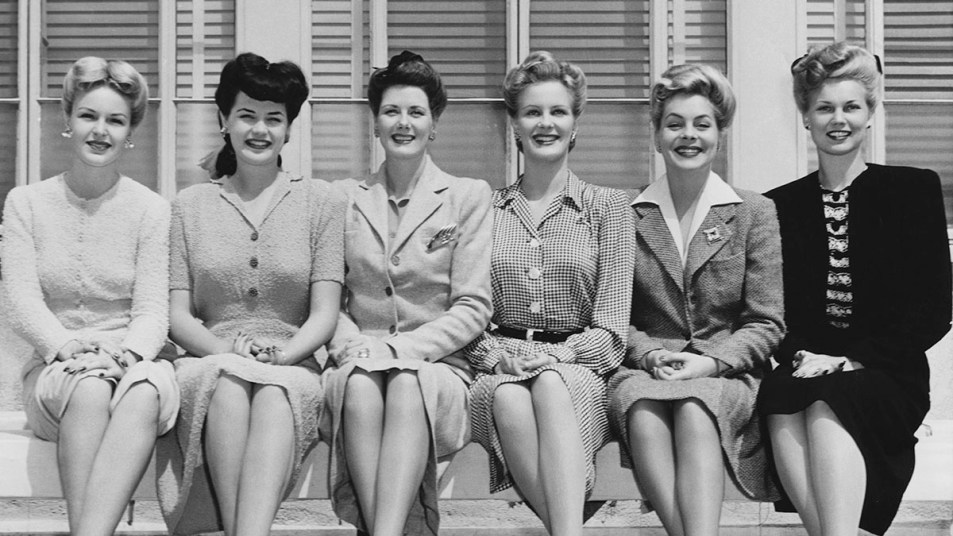
The 1940s was a turbulent decade, forever defined by World War II. The war touched all areas of society, including the garment industry and ultimately changed the face of fashion forever. Rations impacted the fabrics that were used, as well as the cuts of clothes — hemlines got shorter, as fabric had to be conserved, and stockings became less common, as nylon was in short supply.
Some women even went so far as to do draw on “liquid stockings” using makeup on bare legs to create the illusion that they were wearing hosiery (for more tricks they used, see 5 genius fashion secrets WWII women learned.) Wool and silk were also needed for uniforms and parachutes, so lighter fabrics like rayon and viscose became more popular for everyday wear.
While there was certainly austerity due to wartime restrictions, the 1940s, by contrast, was also a time of glamour. Hollywood stars like Lauren Bacall and Rita Hayworth inspired women around the country with their elegant hair and makeup and perfectly tailored dresses, and designers like Christian Dior, Claire McCardell and Norman Norrell pioneered women’s style with their beautifully flattering and feminine frocks that were often featured in fashion magazines of the day.
Onscreen, Hollywood costume designers like the wildly prolific Edith Head presented fashions that many women coveted, from smart skirt suits to luxurious gowns.
While the 1940s may feel far in the past, some looks from the decade are surprisingly modern. Platform shoes were ubiquitous, and many women started wearing pants for the first time. It’s no surprise, then, that ’40s fashion has made multiple comebacks over the years.
Here we explore some of the most iconic styles of the era.
The features that made 1940s dresses distinctive
Gathered waist
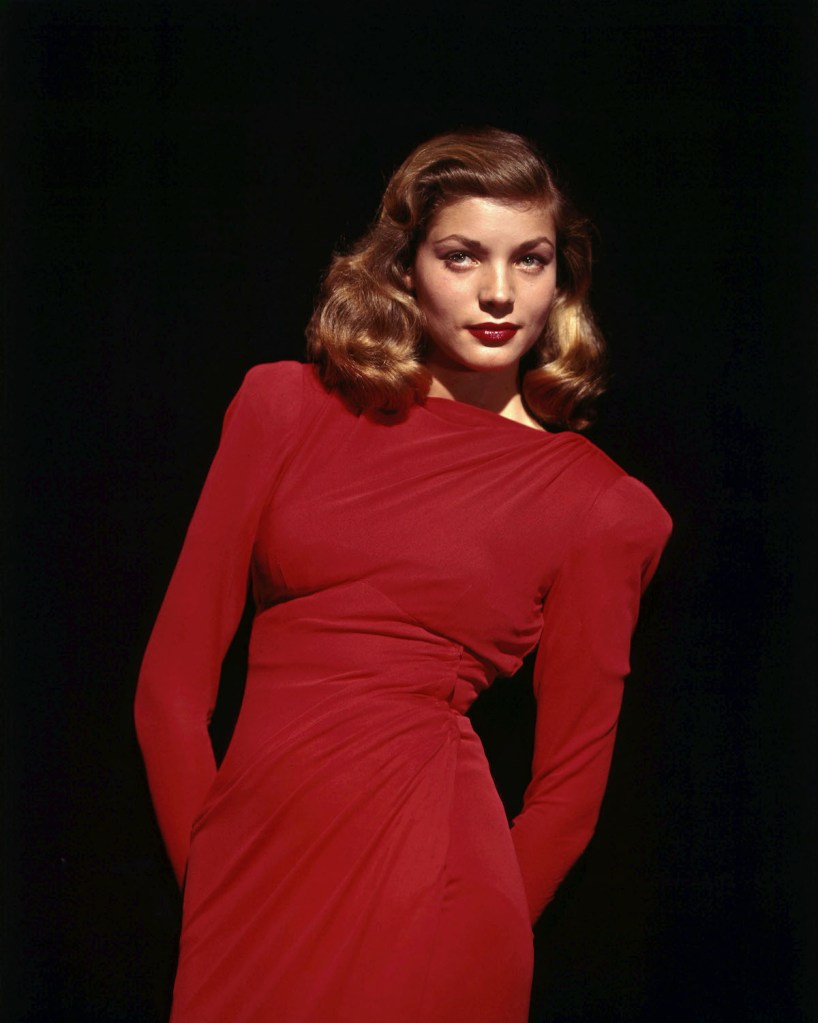
While the dresses of the 1950s had wide circle skirts and the dresses of the 1960s were shorter than ever before, 1940s dresses were often knee-length and lacked excess frills. Lauren Bacall’s dress above may be long-sleeved, but the figure-flattering gathering and red shade make it sexy — she looks every inch the femme fatale.
Structured shoulder pads
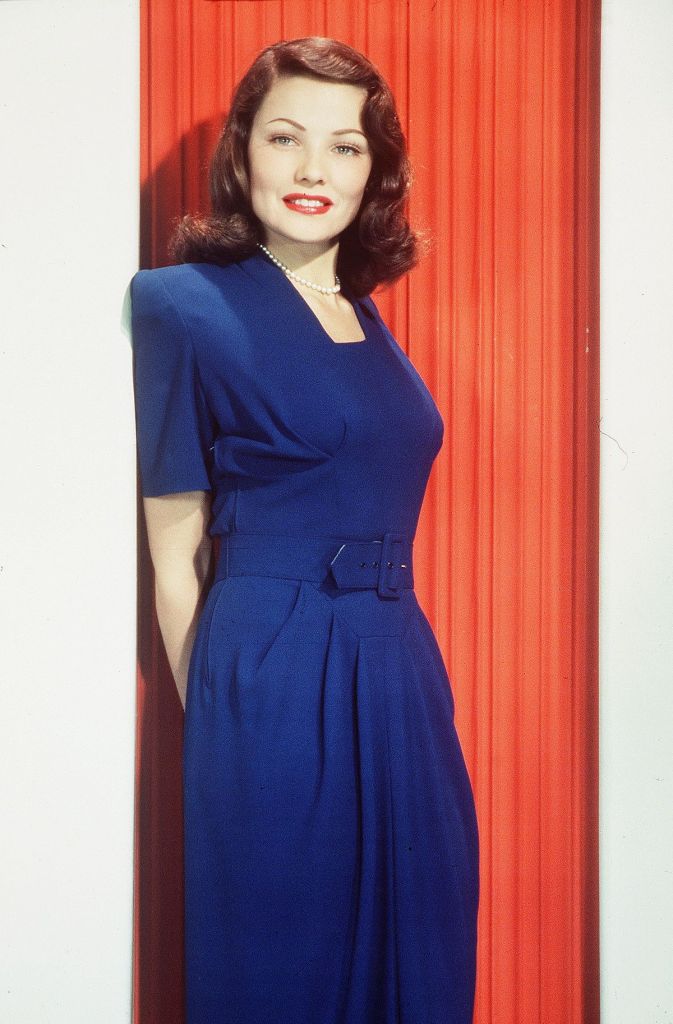
Gene Tierney sports a belted blue dress in 194720th Century Fox/Kobal/Shutterstock
1940s dresses were smartly tailored. Gene Tierney’s lovely yet casual blue frock features structured shoulders (a style that would come back in a big way in the ’80s) and a belted waist. The slightly square neckline adds to the polished look. Historians note that many casual dresses of the time borrowed elements from wartime uniforms: “The look was simple but stylish, with good proportion and line. It incorporated padded shoulders, a nipped-in waist and hems to just below the knee,” wrote James Laver in Costume and Fashion: A Concise History. These more low-key dresses could be worn by anyone, from screen sirens to everyday women.
Bright prints and florals
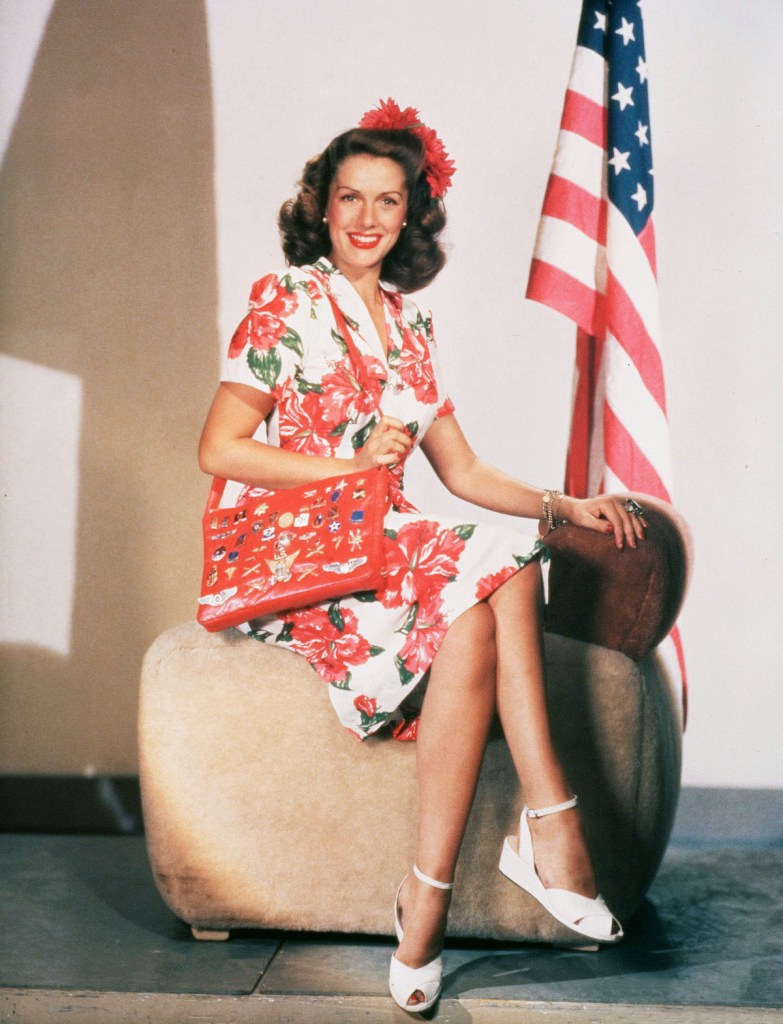
Women also had fun with print dresses in the ’40s. Classic patterns like plaid and florals were popular, but there were also novelty prints like hearts and painterly motifs. Actress and model Jinx Falkenburg posed in a bold floral print dress that paired well with an American flag and a purse covered in patriotic pins. The bright pattern speaks to the strong can-do spirit of the time. There’s nothing like a playful print to put some pep in your step.
Glamorous gowns
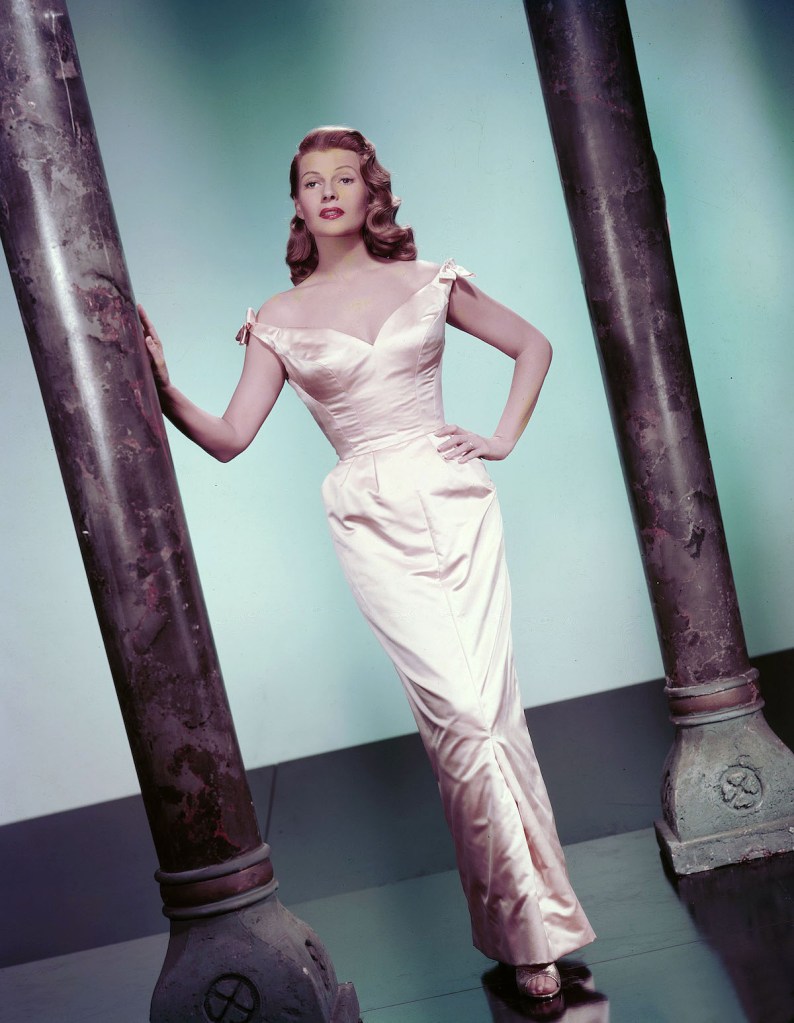
The plunging neckline and nipped-in waist on Rita Hayworth’s lovely evening dress embody the charm of late-’40s style. While these ultra-feminine hourglass silhouettes would become a hallmark of ’50s fashion, it was in the late ’40s, shortly after the end of WWII, that Dior’s “New Look” was introduced. The New Look celebrated a type of glamour that had previously been on hold, and Hayworth’s gown, with its luscious fabric and flattering form, spoke to this new prosperity.
The features that characterized 1940s pants
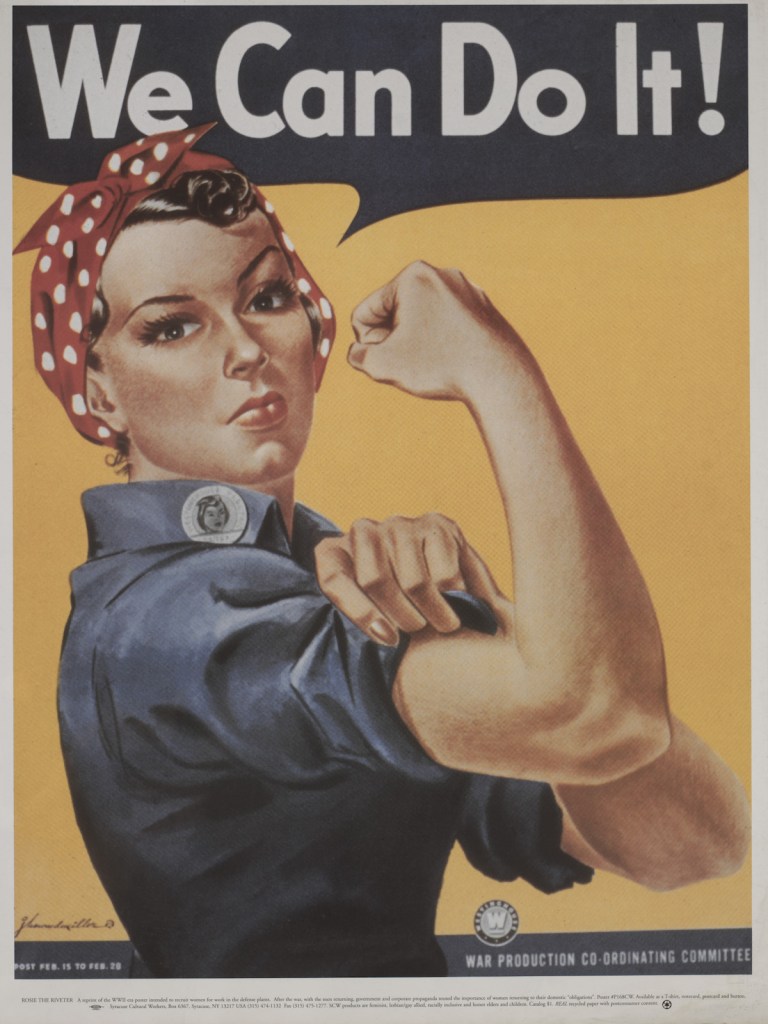
One of the biggest fashion transformations of the ’40s was the growing popularity of pants for women. When men were at war and women increasingly entered the workforce, women’s pants became a practical fashion choice. The ubiquitous wartime image of Rosie the Riveter, a strong female worker in a no-nonsense jumpsuit with rolled-up sleeves, inspired women to serve their country and put on a uniform, and showed that pants were no longer just for the boys.
Tailored trousers
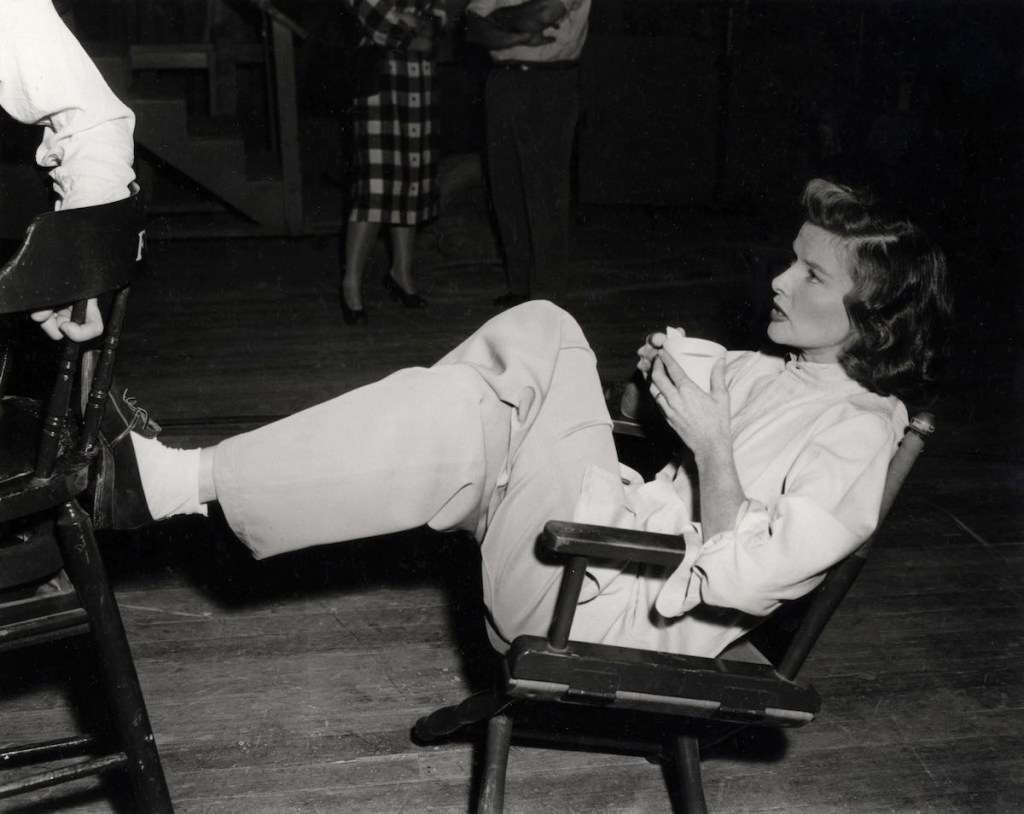
But pants weren’t just about utilitarianism. They were also beloved by actress Katharine Hepburn, who was known for her trailblazing trousers. With her slouchy-yet-smart pants and sharp wit, Hepburn showed that a Hollywood star didn’t need to be constantly dolled up, and she became one of the first celebrities to embrace a truly modern style.
High-waisted slacks
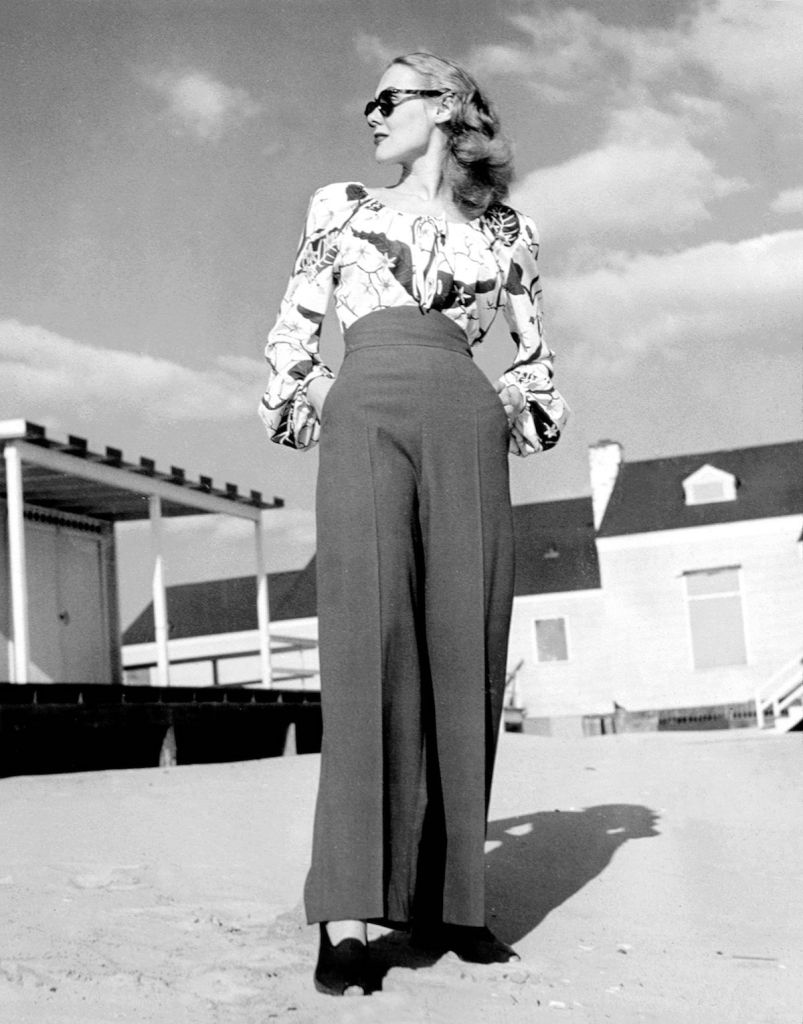
Distinctive 1940s shoes
Practical lace-up oxfords
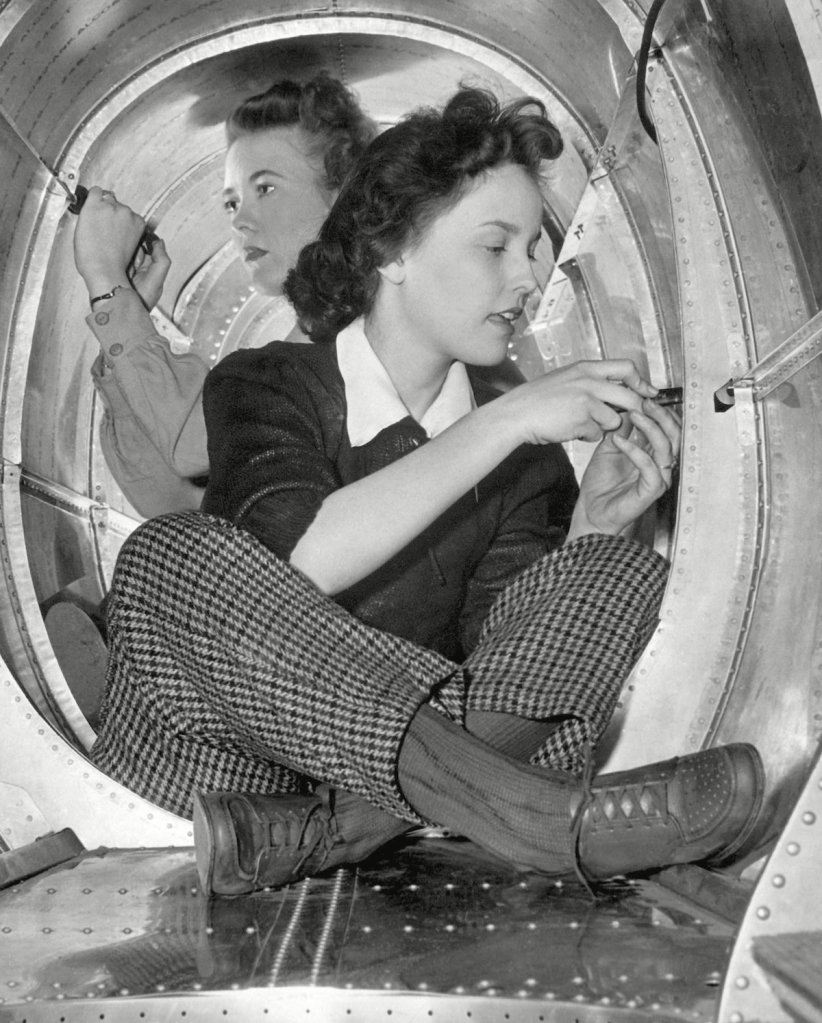
Sensible lace-up oxford shoes were worn by working women during the war. Since they spent a lot of time on their feet, they needed shoes that were utilitarian, and androgynous oxfords were just the thing to get the job done. Men also wore oxfords, and variations like saddle shoes and heeled or platform oxfords were popular for women outside of the workplace.
Cork-heeled wedges
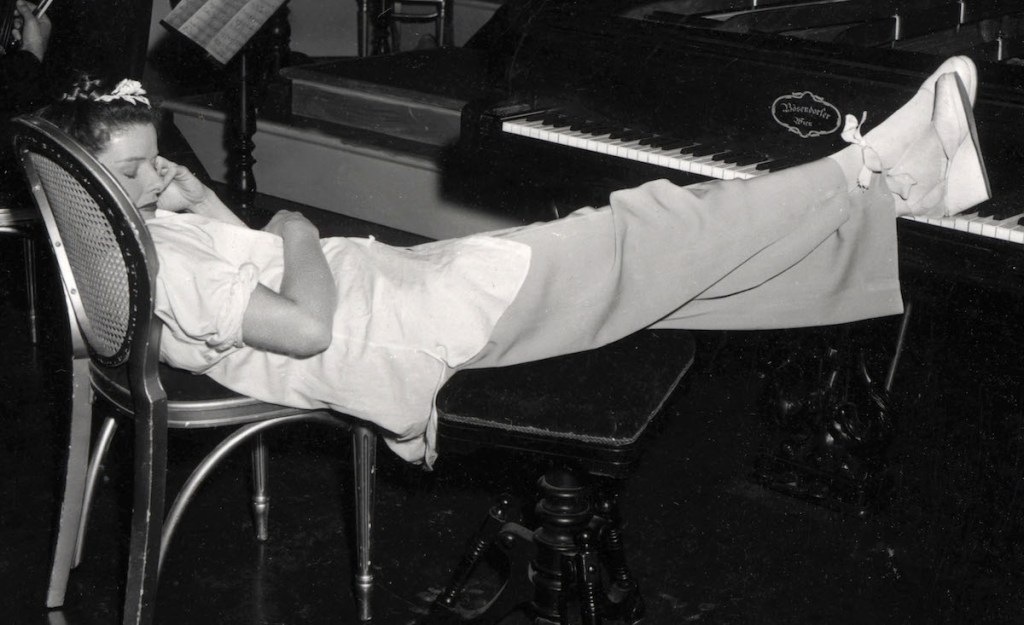
Rationing had an impact on footwear as well as clothing. Leather and rubber were no longer widely available, and factories prioritized creating shoes for military uniforms. Lighter, easier-to-produce shoes like cork-heeled sandals and espadrilles became popular, and people were expected to keep shoe purchases to a minimum.
Round-toe pumps
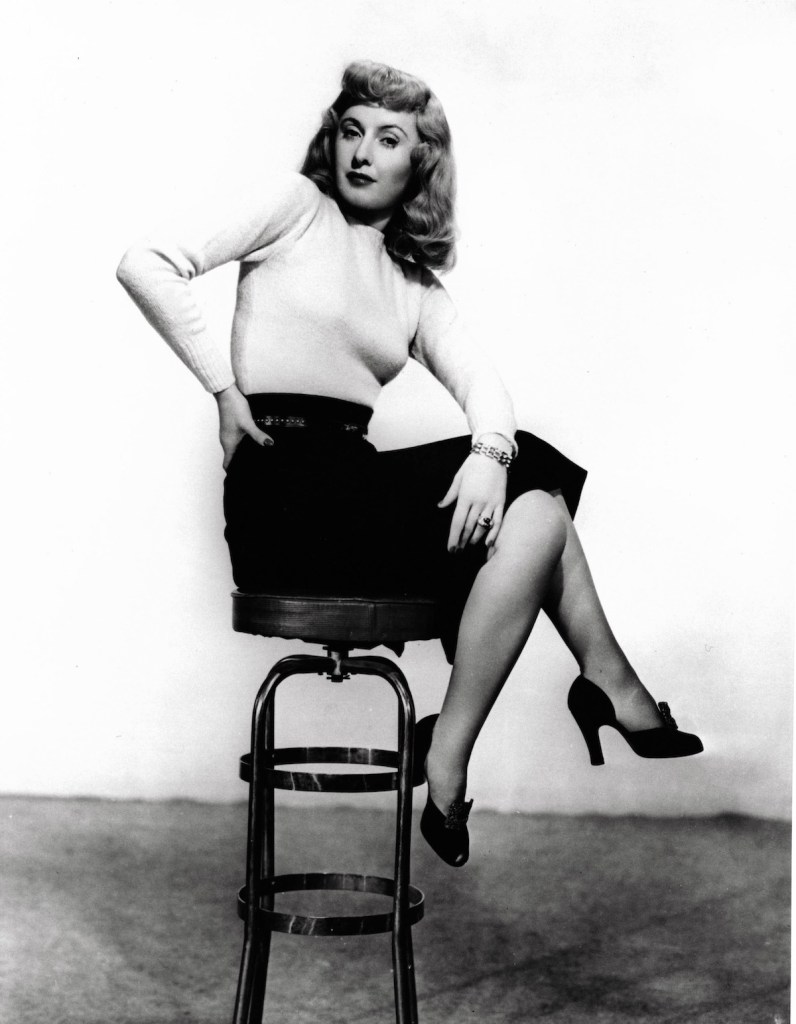
Pumps are the kind of footwear that’s never gone out of style. In the ’40s, pumps weren’t worn by women in the workforce, but they did frequently appear onscreen and in the pin-up imagery of the time. If you see a femme fatale character in a film noir (that most ’40s of genres), chances are good she’ll be wearing a fierce pair of heels with a rounded toe — they’re the ideal shoes for standing tall and looking confident.
Platforms
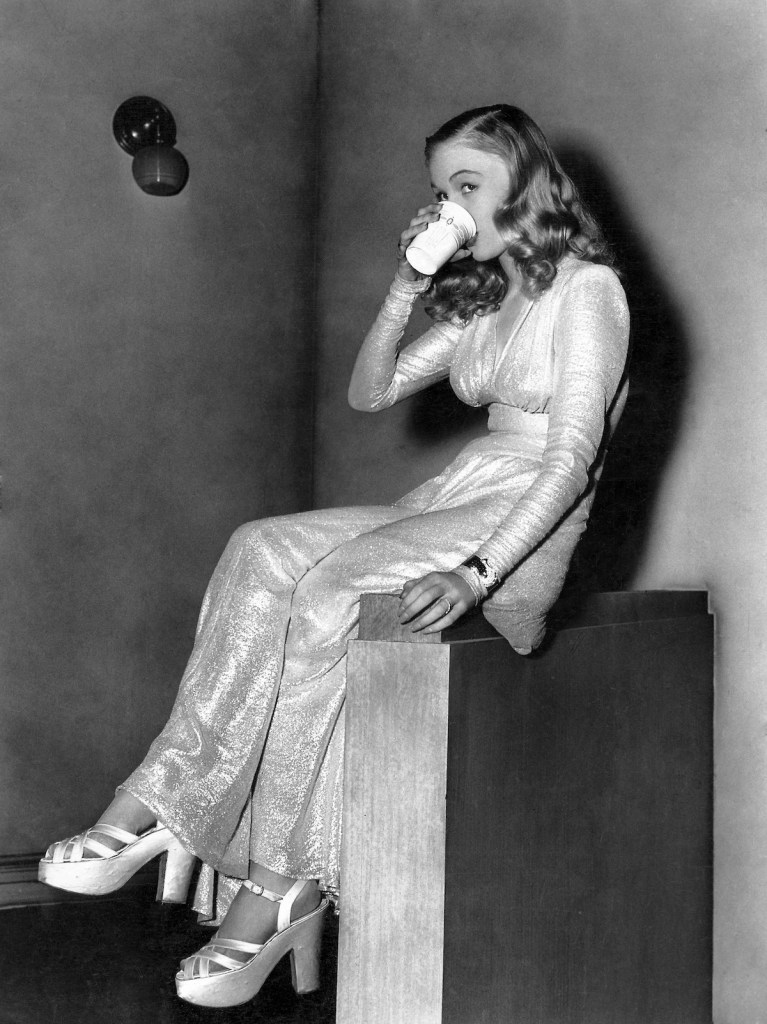
Don’t Veronica Lake’s shiny, chunky platform shoes look fit for a ’70s disco? Well, the style actually first became trendy in the ’40s. The shoes didn’t just make legs look longer and outfits look more put together, they were also more comfortable than regular heels. Italian designer Salvatore Ferragamo is credited with first popularizing platforms in the late ’30s (his rainbow platform sandals, which could just as easily be worn today, proved revolutionary) and the style took off in the ’40s as women wore the shoes to embrace their inner bombshell.
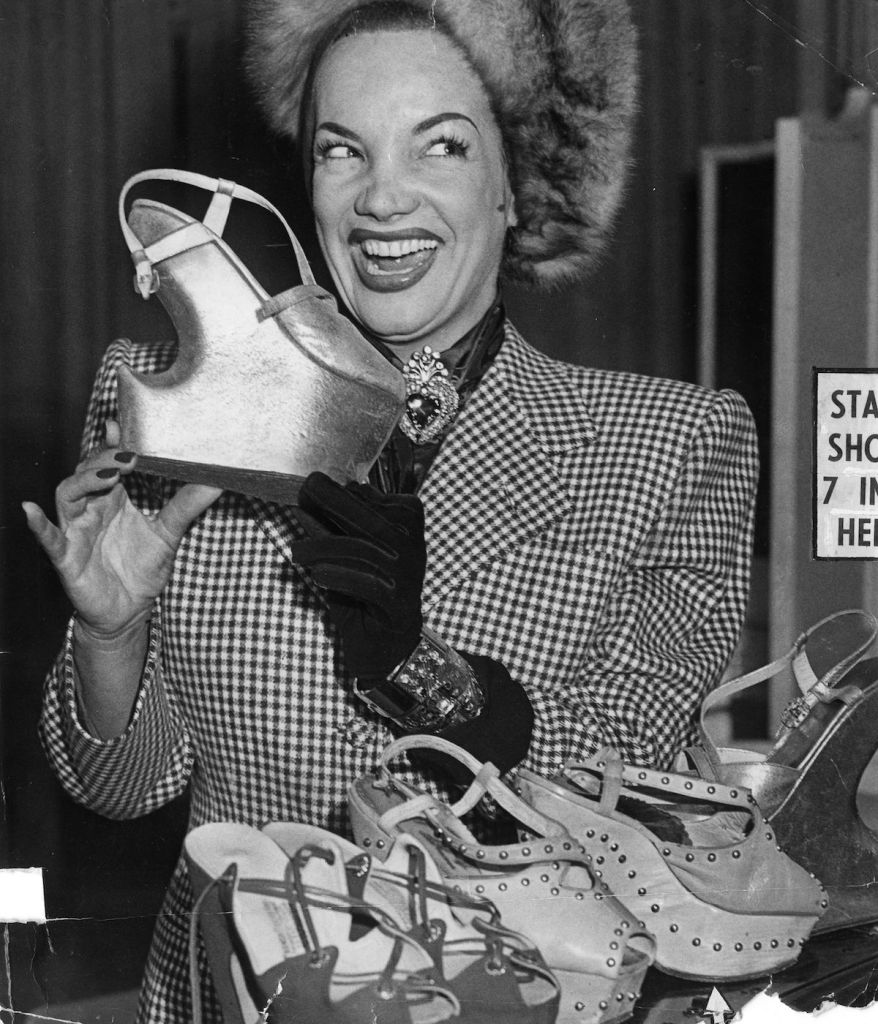
Distinctive 1940s accessories
Berets
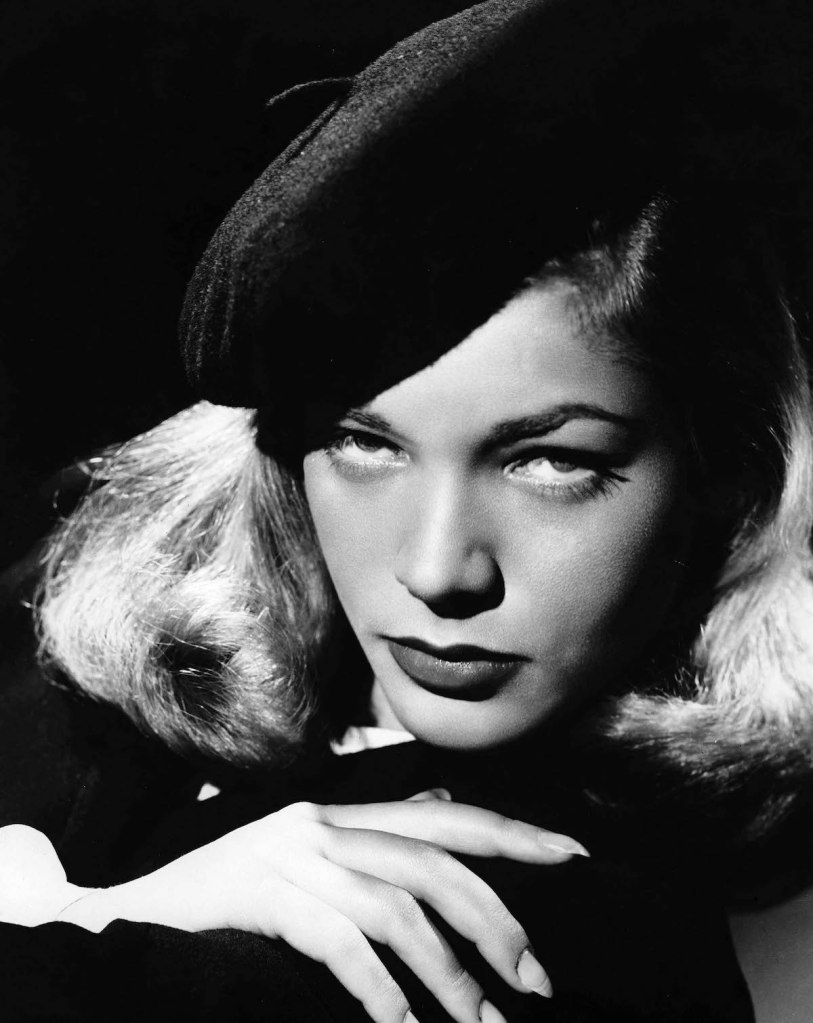
Hats are one of the most reliable ways to bring an old-school outfit together. In the ’40s, hats were essential accessories for both men and women. Berets were both a nod to the shape of military headwear and a way to channel sophistication and mystery.
Pillbox hats
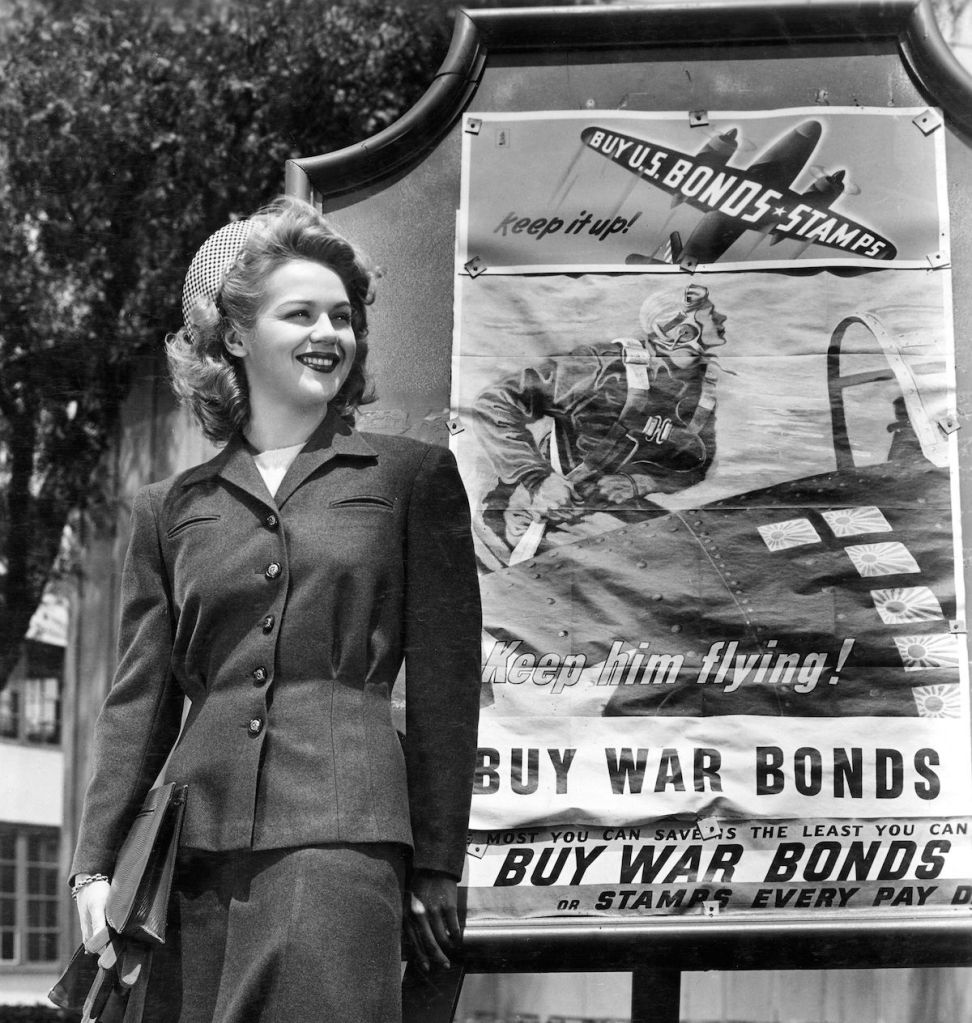
Simple pillbox hats were another military-inspired style that became popular for women in the ’40s. This sensible shape would remain popular into the ’50s and ’60s.
Embellished fascinators
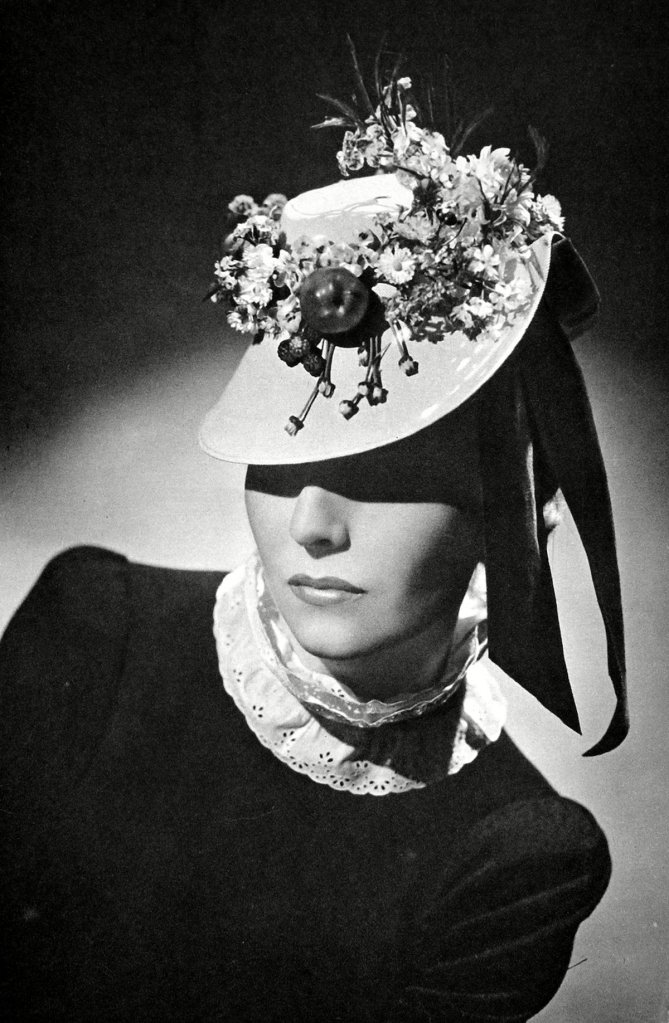
Some of the hats from the ’40s are a bit…out there. While this sloped hat covered in fruits, flowers and a ribbon may not have been the most practical, it certainly made a statement and offered some much-needed escapism.
Fishnet veils
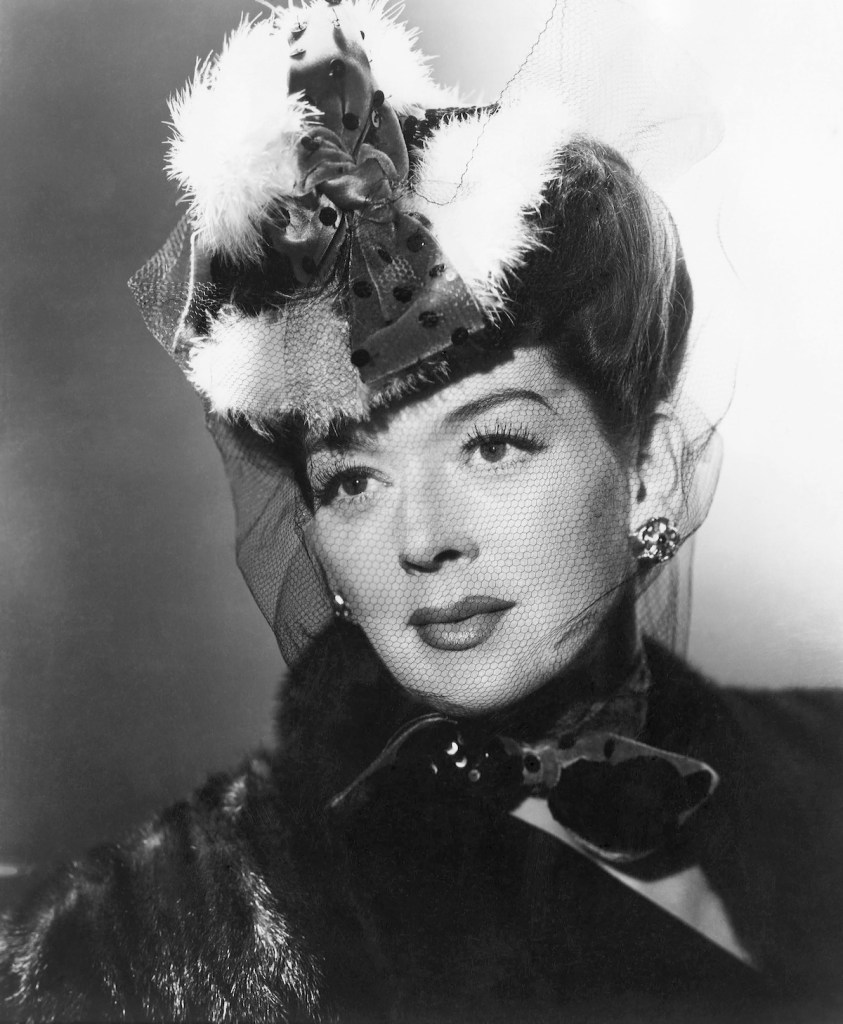
Hats with veils were often seen on movie stars and gave women an added look of sophistication. The veiled hat did double duty: It didn’t just cover your head, it also cast a mystique upon your face.
Sleek turbans
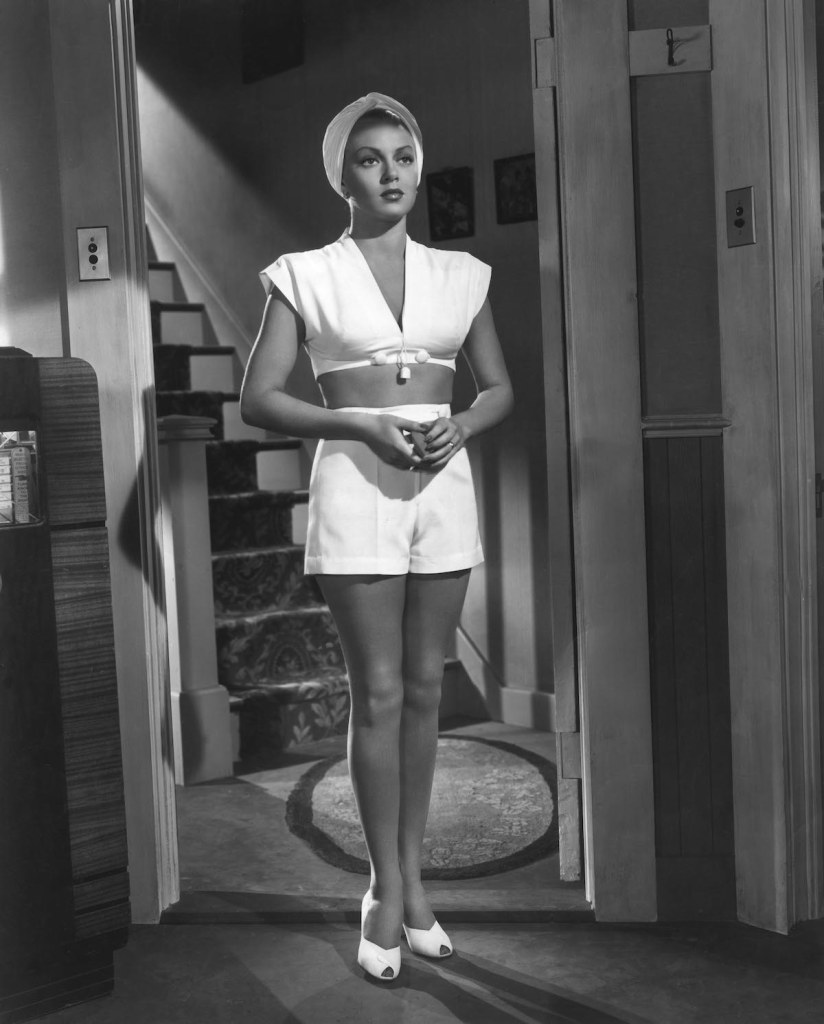
Another popular way to cover up one’s hair in style was with a charming turban. In the classic film noir The Postman Always Rings Twice, Lana Turner’s turban was the ideal accent for a flirty all-white summer look. Exotic yet casual, the turban looked just as good poolside as it did with a nice dress.
Clutch purses
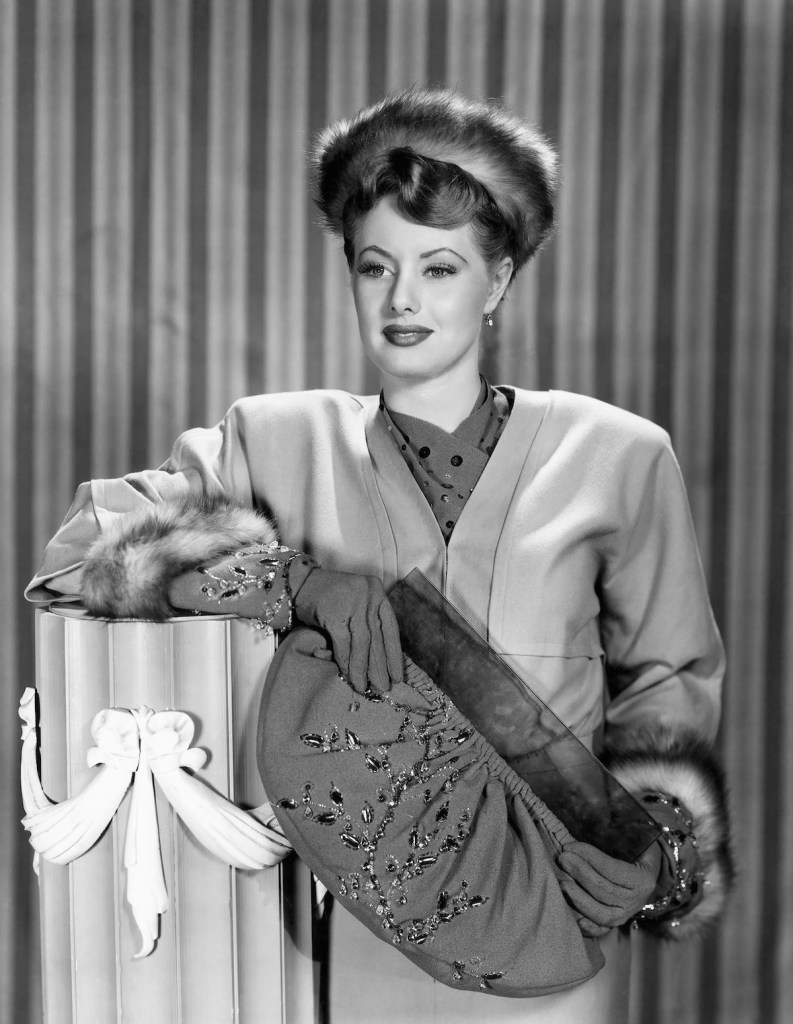
When it came to bags, women often carried clutches. These purses didn’t have straps and were instead carried in one’s hands (bonus points if you struck a pose while doing it!). These bags had many variations in style, and could be made from leather, wool or other materials, and often featured accents made from Bakelite (a type of plastic that was popular at the time, and was also used for jewelry).
Distinctive features of 1940s swimsuits
The first bikini
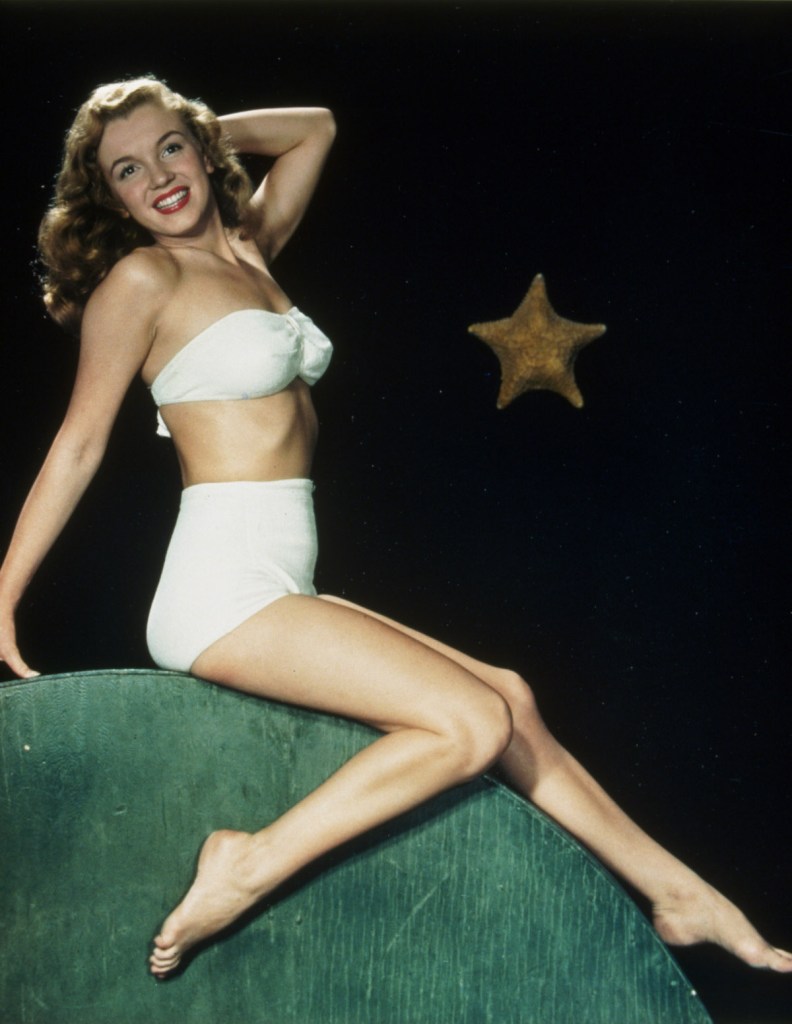
The ’40s was a pivotal decade for swimwear. The bikini was formally introduced in 1946, and swimsuits became more revealing (though they look fairly tame by today’s standards). Swimsuits were made of heavy fabrics and often featured bandeau tops and high-waisted, full-coverage bottoms, as seen on a pre-superstar Marilyn Monroe above.
Corset-style one pieces
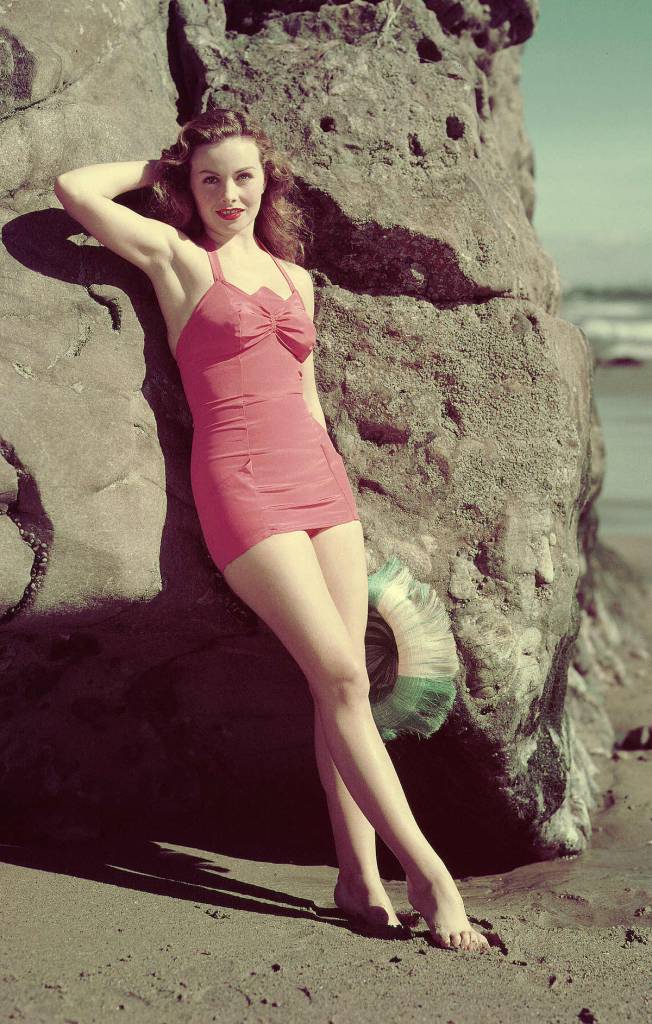
The one-pieces of the day had structured, corset-like seaming and covered the tops of the hips and the backside. They often had halter style straps and sturdy shapes. This swimwear silhouette would continue throughout the ’50s, and in the ’40s it was particularly relevant, as many soldiers decorated their living quarters with pin-up images of models and actresses showing off their bodies in swimsuits, and these bombshells became part of the day’s patriotic mythology.
1940s fashion forever
The ’40s changed the way women dressed and paved the way for modern style. From casual yet chic dresses to tailored pants, the styles of the day still feel fresh, while also powerfully reflecting the complex time in which they first became popular.
Want to see more nostalgic fashion styles through the years? Check out:
24 Glamorous & Flattering 1950s Fashions We’d Love To See Make a Comeback
From Hippie Chick to Disco Diva — These Funky ’70s Fashions Will Take You Back
Relive The 1980s With These Totally Rad, Music-Inspired Outfits












